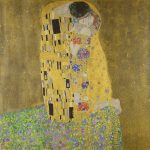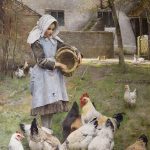When we think of Salvador Dalí, images of melting clocks, dreamlike landscapes, and eccentric mustaches often come to mind. Yet behind the flamboyant persona and groundbreaking art was a woman who played a crucial role in shaping Dalí’s life and career: Gala. Their relationship, marked by intense passion, mutual dependence, and creative collaboration, spanned more than five decades. This article delves into the fascinating and complex partnership between Salvador Dalí and Gala, exploring how their union influenced their lives and Dalí’s enduring legacy in the world of surrealism.
Early Lives and Meeting
Salvador Dalí was born on May 11, 1904, in Figueres, Catalonia, Spain. From an early age, Dalí displayed remarkable artistic talent and a penchant for eccentricity. He studied at the Royal Academy of Fine Arts of San Fernando in Madrid, where his unique style began to take shape. Dalí was deeply influenced by a range of artistic movements, including Impressionism, Cubism, and Freudian psychoanalysis, which would later culminate in his distinctive surrealist works.
Gala, born Elena Ivanovna Diakonova on August 26, 1894, in Kazan, Russia, had a vastly different upbringing. Before meeting Dalí, she had already lived a life marked by romance and intellectual engagement. She married the French poet Paul Éluard in 1917 and became an integral part of the Surrealist circle in Paris, where she developed relationships with influential artists and writers. Gala’s magnetic personality and keen intelligence made her a muse and confidante for many.
Dalí and Gala first met in 1929 in Cadaqués, Spain, when she visited with her then-husband, Paul Éluard. The meeting was nothing short of transformative for Dalí. He was immediately captivated by Gala, who was ten years his senior. Despite the age difference and her marital status, Gala recognized Dalí’s extraordinary talent and potential. Their connection was instant and profound, setting the stage for a lifelong partnership.
The Beginning of Their Union
Gala and Dalí’s relationship quickly evolved into a passionate love affair. Gala left Éluard and immersed herself fully in Dalí’s world. They married in a civil ceremony in 1934, and later in a Catholic ceremony in 1958. From the outset, their relationship was marked by a deep mutual dependence. Gala became Dalí’s muse, manager, and greatest supporter, while Dalí provided Gala with a sense of purpose and creative inspiration.
Gala’s influence on Dalí’s work was profound. She became the subject of many of his paintings, often depicted as a Madonna-like figure or a goddess. Works such as “The Madonna of Port Lligat” (1949) and “Galatea of the Spheres” (1952) showcase her central role in his artistic vision. Dalí often referred to Gala as his “Gradiva,” a term borrowed from a novel by Wilhelm Jensen, meaning “the one who advances.” She was not only his muse but also a driving force behind his artistic and personal life.
Gala’s Role as Muse and Manager
Gala was not just a passive muse; she played an active role in managing Dalí’s career. She was instrumental in promoting his work, negotiating with galleries, and securing commissions. Her keen business acumen and understanding of the art world helped Dalí gain the recognition and financial success he enjoyed. Gala’s influence extended beyond the practical aspects of Dalí’s career; she also provided emotional and intellectual support, helping him navigate the complexities of the art world and his own creative process.
Gala’s presence in Dalí’s life allowed him to focus entirely on his art. She handled the logistics and practicalities, freeing him to explore his imagination and push the boundaries of surrealism. This partnership was crucial in enabling Dalí to produce some of his most iconic works. Her belief in his genius and unwavering support helped him overcome self-doubt and achieve his full potential.
The Complexity of Their Relationship
The relationship between Dalí and Gala was far from conventional. It was marked by intense passion, but also by jealousy, infidelity, and emotional turbulence. Gala had numerous affairs, some with much younger men, which Dalí tolerated, albeit with a mix of pain and acceptance. Their relationship was open, and Dalí, too, had his own romantic entanglements, although his primary devotion remained to Gala.
Despite these complexities, their bond remained unbroken. Gala’s affairs did not diminish her role as Dalí’s muse and confidante. Instead, they seemed to coexist within the unique framework of their relationship. Dalí’s acceptance of Gala’s infidelities was part of their unconventional love, rooted in a deep emotional and intellectual connection that transcended traditional boundaries.
Artistic Collaboration and Influence
Gala’s influence on Dalí’s art extended beyond her role as a muse. She was a collaborator in the truest sense, contributing ideas and concepts that Dalí incorporated into his work. Their collaboration can be seen in the thematic and stylistic evolution of Dalí’s paintings. The recurring motifs of religious symbolism, eroticism, and the human psyche in his work often reflect Gala’s influence and their shared interests.
One notable example of their collaboration is the painting “Gala Contemplating the Mediterranean Sea” (1976), which also doubles as a portrait of Abraham Lincoln when viewed from a distance. This work exemplifies Dalí’s fascination with optical illusions and dual images, themes that were often discussed and developed in partnership with Gala. Her intellectual input and keen understanding of his artistic vision were integral to the creation of such complex and innovative works.
The Impact of World War II
The outbreak of World War II in 1939 had a significant impact on Dalí and Gala’s lives. Fearing the National Socialist occupation of France, they fled to the United States, where they lived until 1948. This period in America was crucial for Dalí’s career. He gained widespread recognition and established himself as one of the leading figures in the surrealist movement. Gala’s role in managing his career was even more critical during this time, as she navigated the complexities of the American art market and media landscape.
In the United States, Dalí and Gala became fixtures of the New York social scene, mingling with celebrities, intellectuals, and fellow artists. Gala’s social skills and connections were invaluable in promoting Dalí’s work and securing lucrative commissions. The couple’s time in America also saw Dalí exploring new mediums and techniques, including film, fashion, and commercial art, further broadening his artistic repertoire.
Return to Spain and Later Years
After the war, Dalí and Gala returned to Spain, settling in Port Lligat, where Dalí continued to create some of his most iconic works. Their life in Spain was marked by a mix of artistic productivity and personal retreat. They spent much of their time in their home, surrounded by the Catalonian landscape that had always inspired Dalí.
The later years of their marriage were marked by declining health and increasing isolation. Gala, who had always been a robust and energetic presence, began to suffer from various ailments. Dalí, too, faced health issues, including Parkinson’s disease, which affected his ability to work. Despite these challenges, their bond remained strong, and Gala continued to support Dalí’s artistic endeavors as much as her health allowed.
Gala’s death on June 10, 1982, was a devastating blow to Dalí. She was buried in the castle of Púbol, which Dalí had bought and restored for her. After her death, Dalí’s own health deteriorated rapidly. He spent his final years in near-seclusion, mourning the loss of his lifelong muse and partner. Dalí died on January 23, 1989, leaving behind a legacy that was inextricably linked to Gala.
Gala’s Influence on Dalí’s Legacy
Gala’s influence on Dalí’s art and career cannot be overstated. She was not only his muse but also his manager, collaborator, and emotional anchor. Her role in his life extended far beyond the traditional boundaries of a muse, encompassing aspects of mentorship, partnership, and unwavering support.
Gala’s ability to navigate the art world and manage Dalí’s career was instrumental in his success. Her understanding of his artistic vision and her ability to translate that vision into practical success helped Dalí achieve international recognition and financial stability. Gala’s impact on Dalí’s work is evident in the recurring themes and motifs that reflect their shared interests and intellectual partnership.
The legacy of Salvador Dalí is intertwined with Gala’s influence. Many of his most iconic works, from “The Persistence of Memory” to “The Sacrament of the Last Supper,” bear the imprint of Gala’s presence and guidance. Her role in his life and art underscores the importance of collaboration and support in the creative process.
Power Dynamics
Analyzing the relationship between Dalí and Gala also brings to light the complex dynamics of gender and power in their partnership. Gala’s role as Dalí’s muse and manager challenges traditional notions of the passive muse and the dominant male artist. She was a powerful and active participant in their relationship, shaping Dalí’s career and artistic direction in significant ways.
However, their relationship also reflects the gendered power dynamics of their time. Gala often worked behind the scenes, her contributions overshadowed by Dalí’s public persona. Despite her crucial role in his success, she is frequently relegated to the background in discussions of Dalí’s career. Recognizing Gala’s contributions and agency is essential in understanding the full scope of their partnership and its impact on Dalí’s work.
The Myth and Reality of Gala
Gala’s persona has often been shrouded in myth and controversy. She has been portrayed as a manipulative and domineering figure, a characterization that oversimplifies her complex role in Dalí’s life. While she was undoubtedly a strong and influential presence, Gala was also a deeply intelligent and insightful individual who played a crucial role in nurturing Dalí’s talent and guiding his career.
Understanding Gala’s true impact requires looking beyond the myths and stereotypes to appreciate her as a multifaceted individual. Her contributions to Dalí’s art and success were significant and multifaceted, encompassing emotional support, intellectual collaboration, and practical management. Gala’s legacy, like Dalí’s, is a testament to the power of creative partnership and the enduring influence of a true muse.
Conclusion: A Lifelong Partnership
The relationship between Salvador Dalí and Gala was one of the most significant and enduring partnerships in the history of art. Their union was marked by intense passion, mutual dependence, and profound creative collaboration. Gala was not only Dalí’s muse but also his manager, confidante, and greatest supporter. Her influence on his life and work was profound, shaping the trajectory of his career and the themes of his art.
As we reflect on the lives and partnership of Salvador Dalí and Gala, we are reminded of the power of love, creativity, and collaboration. Their relationship, with all its complexities and contradictions, underscores the importance of mutual support and intellectual exchange in the creative process. The legacy of Dalí and Gala continues to inspire and captivate, a testament to the enduring power of their lifelong partnership.




